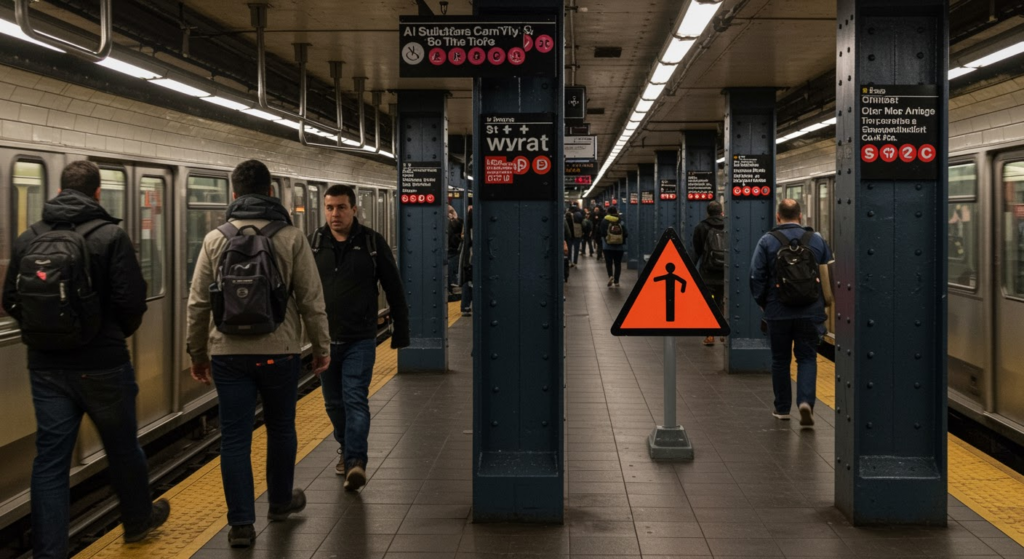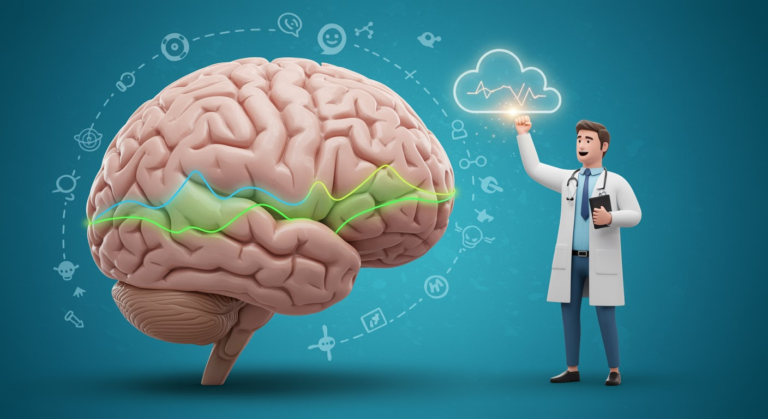
AI Cameras Flag Problematic Behavior in New York Subways
Enhancing Subway Safety with AI Subway Cameras
Imagine stepping onto a crowded subway platform in New York City, where safety isn’t just a hope—it’s becoming a reality thanks to cutting-edge technology. The New York Metropolitan Transportation Authority (MTA) is rolling out AI subway cameras across its extensive network, designed to spot and prevent problematic behavior before it spirals out of control. This proactive approach reflects the city’s dedication to upgrading public transit security amid growing concerns from daily riders, blending innovation with everyday reliability.[1][2][5]
What makes these AI subway cameras stand out is their ability to analyze live feeds and predict potential issues, turning passive monitoring into a powerful tool for prevention. Riders have reported feeling more at ease knowing that help could arrive in seconds, and this system is already making waves in how we think about urban safety. Have you ever worried about unexpected incidents during your commute? Tools like these might just change that.
How AI Subway Cameras Operate in the Subway System
Gone are the days of just recording what happens; AI subway cameras actively scan for trouble in real time. These devices use sophisticated algorithms to detect unusual patterns, such as sudden movements or signs of distress, flagging them instantly to NYPD or MTA teams for quick action. It’s like having an extra set of watchful eyes that never blink, ensuring that small issues don’t turn into bigger problems.
For instance, if someone appears agitated near a crowded area, the system could alert authorities before a confrontation escalates—potentially averting what could have been a headline-making event. This isn’t science fiction; it’s happening now in the bustling tunnels of NYC. By focusing on behaviors rather than individuals, AI subway cameras maintain a balance between vigilance and respect for personal space.
Key Features of These AI Subway Cameras
- Behavior Analysis: The technology zeroes in on actions like erratic gestures, helping to identify risks without invading privacy.
- Real-Time Alerts: Instant notifications go out to security personnel, allowing for swift interventions that could save time and prevent harm.
- No Facial Recognition: To ease worries about surveillance overreach, these systems avoid facial scans altogether, concentrating solely on general movements.[2][3][4][7]
- Predictive Prevention: By anticipating trouble spots, AI subway cameras aim to stop incidents in their tracks, fostering a safer environment for everyone.
The Drive Behind AI-Powered Security Measures
Recent spikes in subway incidents have pushed the MTA to adopt AI subway cameras as part of a larger overhaul. Michael Kemper, the MTA’s Chief Security Officer, has highlighted this as a key step in rebuilding trust among commuters who feel vulnerable during their daily travels. It’s not just about reacting; it’s about staying one step ahead in a city that never sleeps.
Governor Kathy Hochul has backed these efforts, pairing them with more visible police patrols and better lighting to tackle broader issues like homelessness. Think about it: What if your commute could be stress-free, knowing that multiple layers of protection are in place? This initiative is a testament to New York’s commitment to innovation, making public transit feel more secure and welcoming.
Privacy and Ethical Considerations in AI Surveillance
While AI subway cameras promise better safety, they’re not without debate—concerns around privacy and potential biases are front and center. MTA officials assure users that these tools analyze actions only, never tracking or identifying individuals, which helps mitigate fears of Big Brother watching. It’s a fine line, but one that’s being walked carefully to protect both security and rights.
For example, imagine a scenario where a false alarm occurs; the system is built to minimize such errors through rigorous testing. Have you ever questioned how your data is handled in public spaces? The MTA emphasizes transparency, ensuring that all operations focus on immediate safety without long-term storage.
Addressing Public Concerns Head-On
- AI systems steer clear of facial recognition, keeping the spotlight on behavioral patterns to reduce intrusion.
- Data is used exclusively for safety purposes, with no retention for personal profiling, giving riders peace of mind.
- Transparency efforts include community forums and updates, so everyone stays informed about how AI subway cameras are deployed.[3][4][5]
Comparing Traditional Surveillance with AI Subway Cameras
Let’s break down how AI subway cameras stack up against old-school methods—it’s like comparing a reactive guard to a proactive sentinel. Traditional CCTV waits for problems to happen, while AI versions jump into action the moment something seems off.
| Surveillance Type | Key Focus | Response Time | Privacy Impact |
|---|---|---|---|
| Traditional CCTV | Passive recording for later review | Delayed, often needing human oversight | Moderate, as footage can be reviewed extensively |
| AI Subway Cameras | Spotting behavioral anomalies on the fly | Instant alerts for rapid response | Lower, thanks to no personal identification features |
Rollout and Future Prospects of AI Subway Cameras
Currently in pilot mode, the MTA’s AI subway cameras are showing early successes, like reducing fare evasion through smarter monitoring. Full-scale implementation is on the horizon, with plans to cover more platforms and even extend to other transit lines—what could this mean for your future rides?
Challenges like ensuring accuracy and avoiding biases are being tackled head-on, as the system evolves. For actionable tips, keep an eye on MTA announcements; staying informed can help you navigate these changes with confidence.
Potential Hurdles and Growth Opportunities
- Bias and Accuracy: Fine-tuning algorithms to avoid unfair targeting of certain groups is essential for equitable use.
- Public Trust: Building confidence through clear communication and visible safety improvements will be key.
- Cost and Scalability: Balancing budgets while expanding coverage could open doors to even more efficient tech integrations.[5]
The Larger Influence of AI Surveillance on Urban Transit
New York’s experiment with AI subway cameras could inspire cities worldwide, offering a blueprint for safer commutes amid rising urban challenges. As crime prevention evolves, these tools might not only cut down on incidents but also enhance overall efficiency in public spaces. What if other metros adopted similar strategies—could it lead to a global shift in how we protect daily travelers?
In a hypothetical scenario, a city like London might use lessons from NYC to refine their own systems, focusing on real-time alerts without compromising privacy. This forward-thinking approach highlights the potential for AI to make transit more reliable and user-friendly.
Key Insights: Summarizing AI Subway Cameras in NYC
- These cameras detect troubling behaviors in real time, prioritizing action over identification for enhanced subway safety.[1][2][5]
- With a strong emphasis on predictive prevention and ethical standards, AI subway cameras avoid invasive tech like facial recognition.[2][3][4]
- As the program expands, it’s clear that New York is setting a new standard for secure, modern public transit.
If this topic sparks your interest, we’d love to hear your thoughts in the comments below—do you see AI subway cameras as a game-changer? Share this article with fellow commuters or dive into more on public safety innovations via our site. For deeper insights, check out this report from Statescoop on the MTA’s advancements.
References
- Statescoop. “MTA deploying AI cameras in NY subway to flag problematic behavior.” Link
- Gothamist. “MTA wants AI to flag problematic behavior in NYC subways.” Link
- BGR. “NYC is exploring AI like Minority Report to predict crime before it happens on the subway.” Link
- Bitget. “New York MTA eyes AI cameras for crime prevention.” Link
- OpenTools.ai. “New York MTA eyes AI cameras for crime prevention on subway platforms.” Link
- YouTube. Video on MTA AI initiatives. Link
- YouTube. Additional coverage. Link
- YouTube. Further discussion. Link
AI subway cameras, New York MTA, crime prevention, subway safety, predictive AI surveillance, NYC subways, AI surveillance technology, behavioral detection, public transit security, privacy in AI







